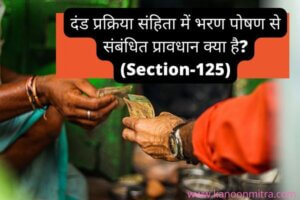धारा 57 भारतीय साक्ष्य अधिनियम – वे तथ्य, जिनकी न्यायिक अवेक्षा न्यायालय को करनी होगी —
न्यायालय निम्नलिखित तथ्यों की न्यायिक अवेक्षा करेगा
(1) भारत के राज्यक्षेत्र में प्रवृत्त समस्त विधियां;
(2) यूनाइटेड किंगडम की पार्लियामेंट द्वारा पारित या एतदत्पश्चात् पारित किए जाने वाले समस्त पब्लिक ऐक्ट तथा वे समस्त स्थानीय और पर्सनल ऐक्ट जिनके बारे में यूनाइटेड किंगडम की पार्लियामेंट ने निर्दिष्ट किया है कि उनकी न्यायिक अवेक्षा की जाए;
(3) भारतीय सेना, नौसेना या वायुसेना] के लिए युद्ध की नियमावली;
(4) यूनाइटेड किंगडम की पार्लियामेंट की, भारत की संविधान सभा की, संसद् की तथा किसी प्रान्त या राज्यों में तत्समय प्रवृत्त विधियों के अधीन स्थापित विधान-मण्डलों की कार्यवाही का अनुक्रम;
(5) ग्रेट ब्रिटेन और आयरलैंड की यूनाइटेड किंगडम के तत्समय प्रभु का राज्यारोहण और राजहस्ताक्षर;
(6) वे सब मुद्राएं, जिनकी अंग्रेजी न्यायालय न्यायिक अबेक्षा करते हैं, भारत में के सब न्यायालयों की और केन्द्रीय सरकार या क्राउन रिप्रेजेन्टेटिव के प्राधिकार द्वारा भारत के बाहर स्थापित सब न्यायालयों की मुद्राएं, नावधिकरण और समुद्रीय अधिकारिता वाले न्यायालयों की और नोटरीज पब्लिक की मुद्राएं और वे सब मुद्राएं, जिनका कोई व्यक्ति संविधान या यूनाइटेड किंगडम की पार्लियामेंट के किसी ऐक्ट या भारत में विधि का बल रखने वाले अधिनियम या विनियम द्वारा उपयोग करने के लिए प्राधिकृत है;
(7) किसी राज्य में किसी लोक पद पर तत्समय आरूढ़ व्यक्तियों के कोई पदारोहण, नाम, उपाधियां, कृत्य और हस्ताक्षर, यदि ऐसे पद पर उनकी नियुक्ति का तथ्य किसी शासकीय राजपत्र में अधिसूचित किया गया हो;
(8) भारत सरकार द्वारा मान्यता प्राप्त हर राज्य या प्रभु का अस्तित्व, उपाधि और राष्ट्रीय ध्वज;
(9) समय के प्रभाग, पृथ्वी के भौगोलिक प्रभाग तथा शासकीय राजपत्र में अधिसूचित लोक उत्सव, उपवास और अवकाश-दिन;
(10) भारत सरकार के अधिपत्य के अधीन राज्यक्षेत्र:
(11) भारत सरकार और अन्य किसी राज्य या व्यक्तियों के निकाय के बीच संघर्ष का प्रारम्भ, चालू रहना और पर्यवसान;
(12) न्यायालय के सदस्यों और आफिसरों के तथा उनके उपपदियों और अधीनस्थ आफिसरों और सहायकों के और उसकी आदेशिकाओं के निष्पादन में कार्य करने वाले सब आफिसरों के भी, तथा सब अधिवक्ताओं, अटर्नियों, प्रोक्टरों, वकीलों, प्लीडरों, और उनके समक्ष उपसंजात होने या कार्य करने के लिए किसी विधि द्वारा प्राधिकृत अन्य व्यक्तियों के नाम;
(13) भूमि या समुद्र पर मार्ग का नियम।
इन सभी मामलों में, तथा लोक इतिहास, साहित्य, विज्ञान या कला के सब विषयों में भी न्यायालय समुपयुक्त निर्देश पुस्तकों या दस्तावेजों की सहायता ले सकेगा।
यदि न्यायालय से किसी तथ्य की न्यायिक अवेक्षा करने की किसी व्यक्ति द्वारा प्रार्थना की जाती है, तो यदि और जब तक वह व्यक्ति कोई ऐसी पुस्तक या दस्तावेज पेश न कर दे, जिसे ऐसा न्यायालय अपने को ऐसा करने को समर्थ बनाने के लिए आवश्यक समझता है, न्यायालय ऐसा करने से इन्कार कर सकेगा।
Section 57 Indian Evidence Act – Facts of which Court must take judicial notice —
The Court shall take judicial notice of the following facts:–
1[(1) All laws in force in the territory of India;]
(2) All public Acts passed or hereafter to be passed by Parliament 2[of the United Kingdom], and all local and personal Acts directed by Parliament 2[of the United Kingdom] to be judicially noticed;
(3) Articles of War for 3the Indian Army 4[Navy or Air Force];
5[(4) The course of proceeding of Parliament of the United Kingdom, of the Constituent Assembly of India, of Parliament and of the legislatures established under any laws for the time being in force in a Province or in the States;]
(5) The accession and the sign manual of the Sovereign for the time being of the United Kingdom of Great Britain and Ireland;
(6) All seals of which English Courts take judicial notice: the seals of all the 6 [Courts in 7[India]] and of all Courts out of 7[India] established by the authority of 8 [the Central Government or the Crown Representative]; the seals of Courts of Admiralty and Maritime Jurisdiction and of Notaries Public, and all seals which any person is authorized to use by 9[the Constitution or an Act of Parliament of the United Kingdom or an] Act or Regulation having the force of law in 7[India];
(7) The accession to office, names, titles, functions, and signatures of the persons filling for the time being any public office in any State, if the fact of their appointment to such office is notified in 10[any Official Gazette]; धारा 57 भारतीय साक्ष्य अधिनियम
(8) The existence, title and national flag of every State or Sovereign recognized by 11[the Government of India];
(9) The divisions of time, the geographical divisions of the world, and public festivals, fasts and holidays notified in the Official Gazette; धारा 57 भारतीय साक्ष्य अधिनियम
(10) The territories under the dominion of 11[the Government of India];
(11) The commencement, continuance and termination of hostilities between 11[the Government of India] and any other State or body of persons;
(12) The names of the members and officers of the Court, and of their deputies and subordinate offices and assistants, and also of all officers acting in execution of its process, and of all advocates, attorneys, proctors, vakils, pleaders and other persons authorized by law to appear or act before it; धारा 57 भारतीय साक्ष्य अधिनियम
(13) The rule of the road 12[on land or at sea].
In all these cases, and also on all matters of public history, literature, science or art, the Court may resort for its aid to appropriate books or documents of reference. धारा 57 भारतीय साक्ष्य अधिनियम
If the Court is called upon by any person to take judicial notice of any fact, it may refuse to do so unless and until such person produces any such book or document as it may consider necessary to enable it to do so.
1. Subs. by the A. O. 1950, for the clause (1).
2. Subs. by the A.O. 1950, for “the clause (2)”.
3. Subs. ibid., for “her Majesty’s”.
4. Subs. by Act 10 of 1927, s. 2 and the First Schedule, for “or Navy”.
5. Subs. by the A.O. 1950, for the Former para, (4).
6. Subs. by the A.O. 1948, for “Courts of British India”.
7. Subs. by Act 3 of 1951, s. 3 and the Schedule, for “the States”.
8. Subs. by the A.O. 1937, for “the G.G. or any L.G. in Council”.
9. Subs. by the A.O. 1950, for “any Act of Parliament or other”.
10. Subs. by the A.O. 1937, for “the Gazette of India or in the Official Gazette of any L.G.”.
11. Subs. by the A.O. 1950, for “the British Crown”.
12. Ins. by Act 18 of 1872, s. 5.
धारा 57 भारतीय साक्ष्य अधिनियम धारा 57 भारतीय साक्ष्य अधिनियम धारा 57 भारतीय साक्ष्य अधिनियम



